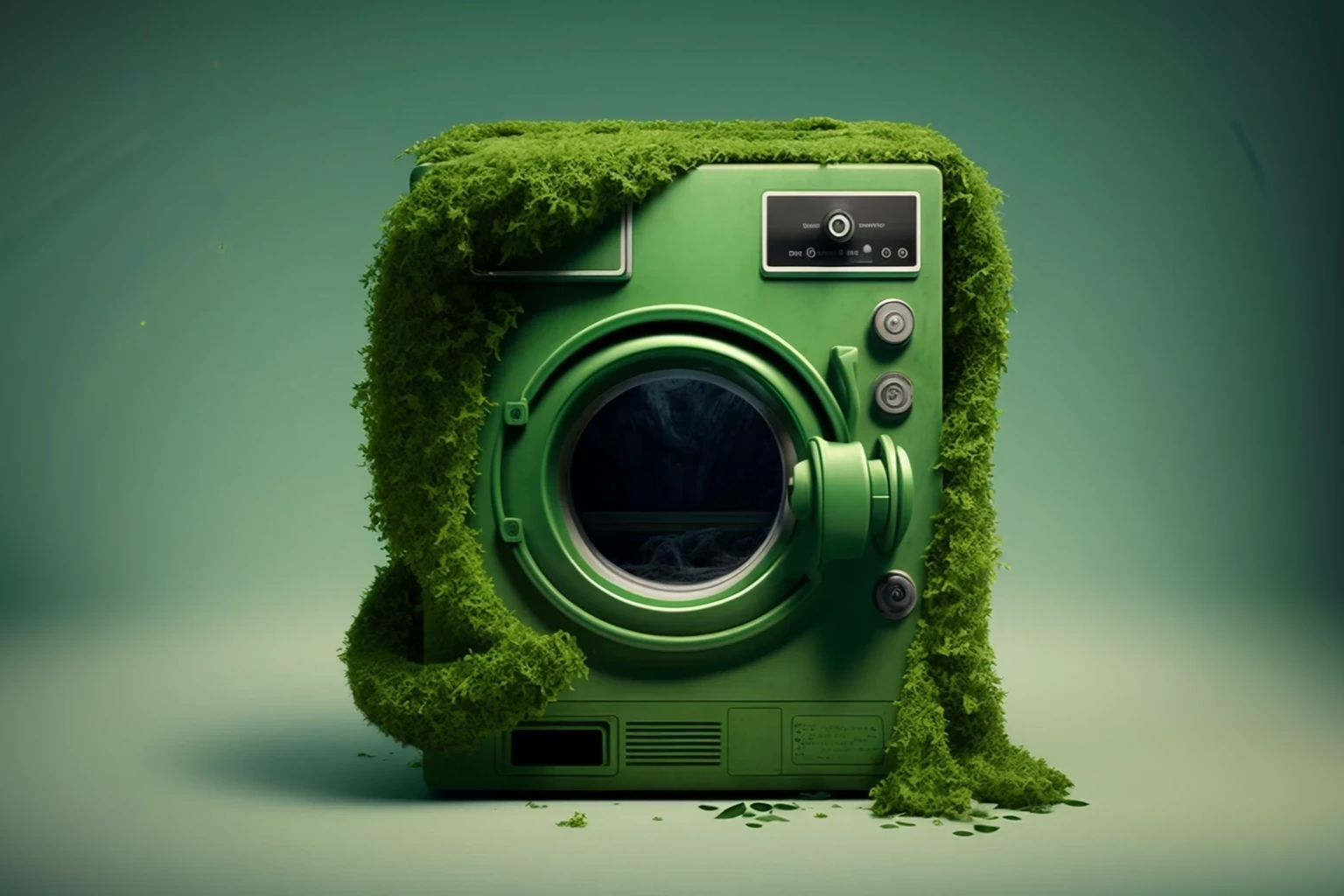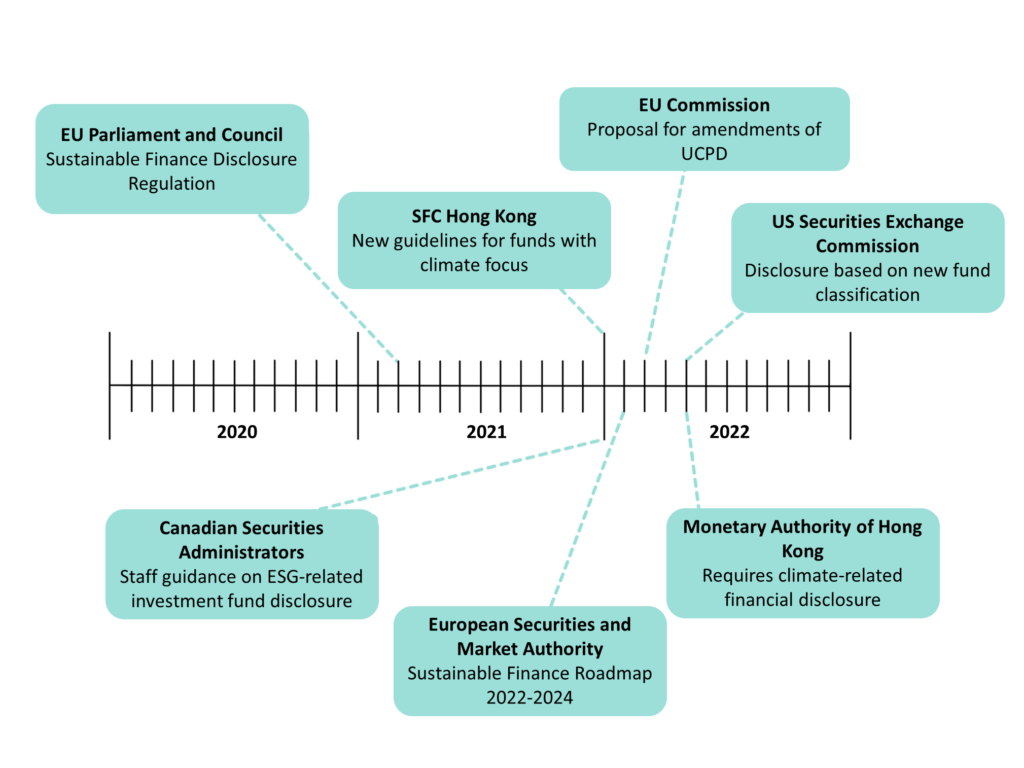
Share this Post
Authors: Nicole Stein & Christoph M. Abels
With the increasing public awareness of climate change and environmental degradation, there has been a rapid rise in demand for “green products” worldwide. However, as the market for eco-friendly products and services grows, so too does the practice of greenwashing. Greenwashing refers to the act of falsely presenting products, services, or policies as contributing to sustainable development, deceiving consumers into believing that they are making environmentally friendly choices.
As corporations have made public commitments to address environmental, social, and governance criteria (ESG), the prevalence of greenwashing has become more apparent. Many of these promises, while appearing to be environmentally responsible, have proven to be deceptive. Large multinational companies often fall short of their targets and use vague language in their sustainability pledges. For instance, the UK’s Competition and Markets Authority discovered that 40% of sustainability claims in online advertising were misleading. This phenomenon highlights the need for increased scrutiny of corporate sustainability claims, as it is evident that many “green” actors may not be as committed to environmental sustainability and social responsibility as they claim to be.
Types of greenwashing
While greenwashing can be broadly defined as any attempt to mislead and/or deceive an audience about the environmental impact of products and services, or even policies, two types of greenwashing can be distinguished at both the organizational and product/service level: claim greenwashing and executional greenwashing.
Claim greenwashing entails arguments either implicitly or explicitly referring to alleged ecological benefits of products or services. Such claims can be either entirely or partially false, omitting important information that prevents proper evaluation of the claim, or using ambiguous terms to create false or incomplete environmental narratives.
Executional greenwashing, rather than relying on explicit claims, incorporates nature-evoking elements (e.g., oceans, forests, birds) to create a misleading impression of “greenness” that does not correlate with the organization’s actions. Executional greenwashing is more subtle than claim greenwashing, exploiting the power of imagery and even color schemes related to nature to project a “green” image of the organization with no accompanying claims.
In claim greenwashing, false claims can be as simple as statements with no supporting evidence provided or reliable third-party substantiation. A complementary tactic involves making claims about a product or service that are deliberately vague or ambiguous. For example, the claim that a certain poorly performing electrical appliance is “the most energy-efficient product in its category” is technically true if the category is limited to “home appliances with poor energy-efficiency performance,” but falsely suggests that it is a true “green” choice. Omitting sensitive and crucial information, as depicted in this hypothetical example, intentionally deceives the consumer and is thus considered greenwashing.
At the corporate level, a firm that presents its efforts to promote sustainability when said efforts are merely a result of compliance with existing legal regulations, is also considered claim greenwashing. By omitting the information that these are legally required and have not been set and/or achieved voluntarily, the firm is leading consumers to believe it is proactively driving sustainability when in fact it is simply following the law.
The prevalence of greenwashing is not limited to the private sector. For example, the European Union was confronted with accusations of greenwashing following a vote by the European Parliament in favor of the European Commission’s taxonomy for sustainable activities. The taxonomy classifies fossil fuel gas and nuclear energy as “environmentally sustainable activities” due to their contribution to climate change mitigation. The proposal was condemned as greenwashing by several member states and environmental groups, such as WWF. Austria and Luxembourg have threatened to sue the EU if the plan were to be implemented in its current form.
Global regulatory initiatives to tackle greenwashing
In 2022, the European Commission (EC) published a proposal that aims at fostering “a circular, clean and green EU economy” by amending current directives, including the “Unfair Commercial Practices Directive” (UCPD) 2005/29/EC as well as the “Consumer Rights Directive” 2011/83/EU. The proposal is embedded in a bundle of initiatives within the framework of the European Green Deal, which lays out ambitious goals for the EU to reduce greenhouse gases by 2050 and decouple economic growth from the exploitation of natural resources.
The European Commission sees the protection of consumers against unfair commercial practices as a key issue in its sustainable product policy framework. Aside from greenwashing, general unfair practices include early obsolescence and the use of unreliable and opaque labels in the context of product communication. The Commission took action because the current directives lacked specific rules to address the issue of greenwashing. Although the rules laid out in the EU Commission’s “Unfair Commercial Practices Directive” (UCPD) could generally be applied to greenwashing practices, enforcement was mostly limited to case-by-case assessments, reducing its efficacy. A study by the Commission underlined the need for a stronger focus on the issue of greenwashing, showing that out of 150 environmental claims reviewed in several EU member states and covering various product groups, more than half provided “vague, misleading or unfounded information.”
Public interest in green consumerism has skyrocketed, with global ESG assets expected to surpass $53 trillion by 2025, representing over a third of the $140.5 trillion in projected total assets under management. As demand for sustainable investment opportunities continues to grow, it is crucial to establish clear standards for valid sustainability claims. Thus, according to a 2022 report by the Network for Greening the Financial System (NGFS), a consortium of central banks and financial regulators, several open questions remain. These include uncertainties surrounding taxonomies, green external reviews, frameworks, and market products. The NGFS report highlights the need for policymakers to address these issues and develop a unified approach to taxonomies. Additionally, establishing principles for assessing environmental outcomes is another critical step in addressing the challenges that accompany the rapid growth of green finance.

Figure 1: Selected global regulatory initiatives against ESG-related Greenwashing
Technology can support effective regulations
The wide array of greenwashing methods, ranging from explicit claims to subtle tactics, poses a significant challenge in developing effective countermeasures. It can be difficult to efficiently combat these misleading marketing practices and achieve maximum impact. Although regulations can aid in addressing false information, it is often difficult to identify information that has been left out. To bridge this gap, data-driven certification could serve as a powerful tool in reducing the risk of greenwashing. Notably, blockchain technology and smart contracts offer potential benefits by automatically monitoring compliance and providing objective verification of adherence to ESG standards, both for investments and environmentally friendly products and services. The blockchain platform of Cult Beauty Provenance is one example of how this technology can be implemented in commerce, with the added benefit of making results accessible to consumers and promoting transparency.
Outlook: Addressing the challenges of greenwashing
Greenwashing is a significant challenge facing the global transition towards sustainable development. Some of the main challenges in addressing greenwashing include the lack of clear and consistent definitions and standards, the difficulty of accurately assessing a company’s environmental impact, and the distorting influence of powerful and well-funded yet misleading marketing campaigns. Efforts are underway to combat each of these challenges, including the creation of independent certification programs, some of which rely on advanced technologies like blockchain, the development of more stringent regulations and laws, and the growing awareness and activism of consumers. The issue of greenwashing is nuanced and requires careful consideration from regulators. It can be challenging to determine where marketing ends and greenwashing begins. For example, is the use of certain colors a form of greenwashing or simply a personal preference? While efforts are being made to address these questions and promote transparency and accountability, it is still possible to limit overt forms of greenwashing, such as claim greenwashing. However, subtler forms of greenwashing, known as executional greenwashing, pose a significant threat and may become one of the major challenges of this decade if consumer education is not prioritized.
The opinions expressed in this text are solely that of the author/s and do not necessarily reflect the views of the Israel Public Policy Institute (IPPI) and/or its partners.
Share this Post

The Transition to Electric Vehicles in Israel
An electric vehicle (EV) operates on electricity, unlike its counterpart, which runs on fossil fuel. Instead of an…

Who’s to blame when artificial intelligence systems cause damage?
Introduction: How Can AI systems Cause Damage? Artificial Intelligence (“AI”) systems are used in various contexts of our…

Understanding Tariffs: Their Role, Impact, and Global Implications
Tariffs are taxes imposed by a government on imported goods and services. They serve as tools for protecting…
